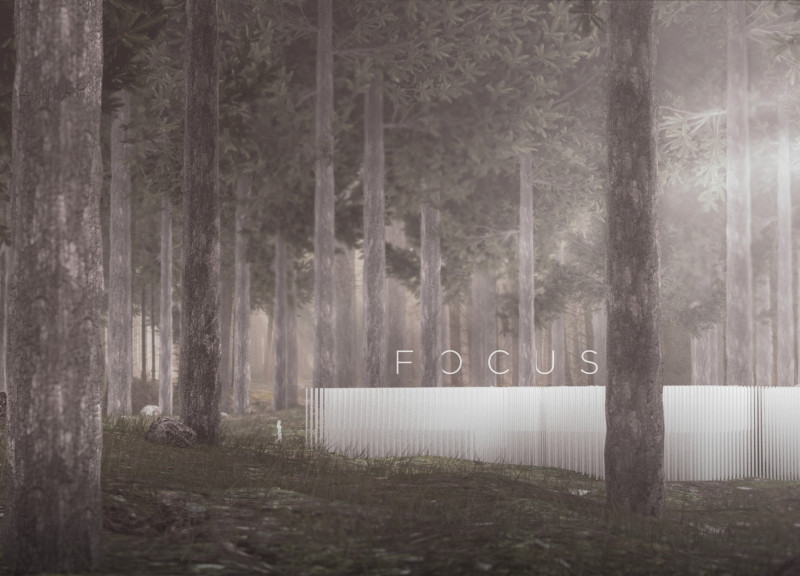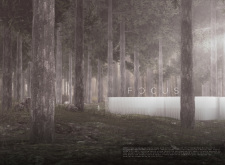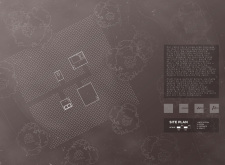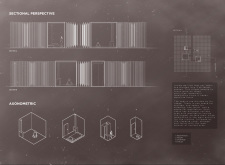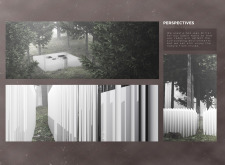5 key facts about this project
Functionally, the cabin serves multiple purposes: it is a space for meditation, contemplation, and quiet reflection, allowing individuals to retreat from the fast pace of daily life. The layout is minimal yet functional, comprising a meditation area, a small storage room, and a toilet, all designed to cater to the needs of the user without unnecessary distractions. This approach emphasizes simplicity, focusing on the essential qualities of space rather than superfluous elements.
Key aspects of the design include the prominent use of vertical pillars, which not only provide structural integrity but also resonate with the natural forms of the surrounding trees. These pillars create a dialogue with the landscape, symbolizing the connection between human activities and the natural environment. The incorporation of two-way mirror glass walls allows the interior of the cabin to remain transparent and light-filled, blurring the boundaries between inside and outside. This innovative approach enables occupants to experience the forest as part of their meditation practice, enhancing the feeling of being enveloped by nature.
The materiality of the project is deliberately chosen to evoke warmth and comfort. Steel is utilized for its strength in creating the cabin's framework, while wood elements introduce organic textures that invite users to engage with the space physically. This thoughtful combination of materials not only serves aesthetic purposes but also reinforces the project's commitment to sustainability and environmental harmony.
Another unique aspect of this project lies in its spatial organization. The meditation area is purposefully designed to be expansive, fostering a sense of freedom and openness that is essential for effective mindfulness practices. The thoughtful arrangement of spaces encourages a natural flow, guiding users smoothly from areas of contemplation to functional aspects, like storage or restroom facilities, without overpowering the intended purpose of quietude.
The cabin’s design also prioritizes accessibility and connection. Pathways between various elements of the site create a journey for users, inviting them to explore the surrounding environment while underscoring the notion of a connected experience. The gaps between the pillars frame views of the forest, serving as natural pauses in the experience of the space, encouraging a reflective mindset.
The project exemplifies a modern approach to architecture that honors tradition while embracing innovation. By addressing contemporary concerns related to mental health and the necessity for peaceful retreats, the meditation cabin serves as both a personal sanctuary and a testament to the power of design in enhancing human well-being.
For those interested in a deeper understanding of this architectural project, including a closer look at the architectural plans, sections, and overall design ideas, exploring the presentation further will provide valuable insights into how this thoughtful design encapsulates the intersection of architecture, nature, and mindfulness.


